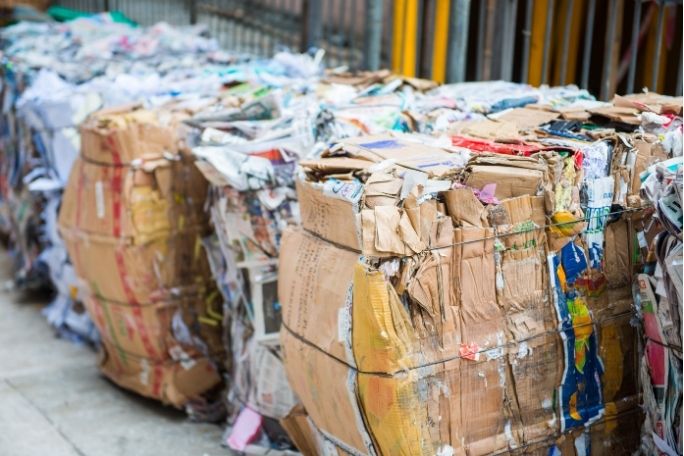Lesson summary
In this lesson, students will explore allegory and develop their own allegorical narratives about the concept of sustainability and recycling.
Learning intentions:
Students will...
- understand the connection between the choices we make about recycling and the health of the planet
- be able to write an allegorical text that shares a message about a current issue in society
Success criteria:
Students can...
- identify one environmental impact of landfill
- describe ways to minimise materials directed to landfill
- describe how materials recovery facilities (MRF) and recycling facilities reduce materials going to landfill
- identify the key features of an allegory
- name key themes or messages of an allegorical story
- plan and write an allegorical narrative with a sustainability theme
Lesson guides and printables
Curriculum links
Select your curriculum from the options below.
Lesson details
Curriculum mapping
Australian curriculum content descriptions:
Year 9 English:
- Understand that authors innovate with text structures and language for specific purposes and effects (ACELA1553).
- Interpret and compare how representations of people and culture in literary texts are drawn from different historical, social and cultural contexts (ACELT1633).
- Present an argument about a literary text based on initial impressions and subsequent analysis of the whole text (ACELT1771).
- Explore and reflect on personal understanding of the world and significant human experience gained from interpreting various representations of life matters in texts (ACELT1635).
- Investigate and experiment with the use and effect of extended metaphor, metonymy, allegory, icons, myths and symbolism in texts, for example poetry, short films, graphic novels, and plays on similar themes (ACELT1637).
- Create imaginative, informative and persuasive texts that present a point of view and advance or illustrate arguments, including texts that integrate visual, print and/or audio features (ACELY1746).
Syllabus outcomes: EN5-4B, EN5-1A, EN5-2A, EN5-1A, EN5-7D, EN5-8D.
General capabilities: Literacy, critical and creative thinking, personal and social capability, ethical understanding.
Cross-curriculum priority: Sustainability OI.8.
Relevant parts of Year 9 achievement standards: By the end of Year 9, students analyse the ways that text structures can be manipulated for effect. They analyse and explain how images, vocabulary choices and language features distinguish the work of individual authors. They evaluate and integrate ideas and information from texts to form their own interpretations. They understand how interpretations can vary by comparing their responses to texts to the responses of others. Students create texts that respond to issues, interpreting and integrating ideas from other texts. They make presentations and contribute actively to class and group discussions, comparing and evaluating responses to ideas and issues. They edit for effect, selecting vocabulary and grammar that contribute to the precision and persuasiveness of texts and using accurate spelling and punctuation.
Unit of work: Visy Education – Literacy Skills.
Time required: 120 mins.
Level of teacher scaffolding: High – model literacy strategies for students.
Resources required
- Device capable of presenting videos to the class
- Student devices capable of presenting videos (one each)
- Jigsaw Worksheet
- Jigsaw Activity Task Cards
- Allegory Analyser
- Allegorical Story Planner (printed, two per student)
- KWLI Chart (printed, A3 size)
Skills
- Communication
- Community engagement
- Critical thinking
- Creativity
- Ethical understanding
Additional info
This lesson has been developed in partnership with Visy. For over 70 years Visy has been committed to finding sustainable solutions for Australia and New Zealand’s recyclables and helping to reduce local landfills. Visy collects, receives and sorts paper, cardboard, glass, plastics, steel and aluminium from households, businesses and schools with the purpose of reusing these products in the re-manufacture of new packaging products.


Welcome back!
Don't have an account yet?
Log in with:
Create your free Cool.org account.
Many of our resources are free, with an option to upgrade to Cool+ for premium content.
Already have an account?
Sign up with:
By signing up you accept Cool.org's Terms and Conditions(Opens in new tab) and Privacy Policy(Opens in new tab).